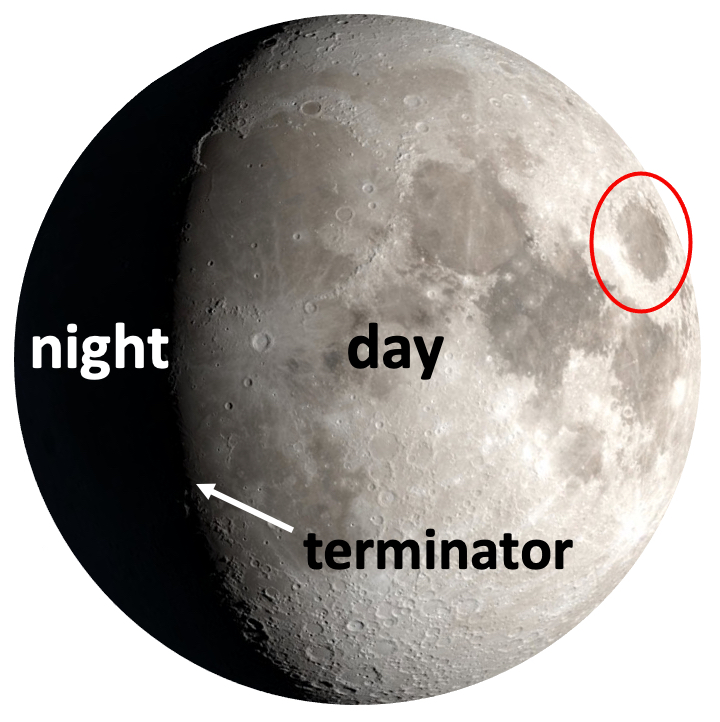My Moon
Have you ever looked carefully at the Moon in the sky? Have you noticed its details, like the darker parts? The surface of the Moon has different geological characteristics; you can see some of them with the naked eye. The next time you look at the Moon, pay close attention to what you see. In this activity, try to identify the different areas you have seen, including the places where astronauts walked during the Apollo missions from to . Check out The Moon, a whole new world (for educators: The Moon, a whole new world) to learn more about the Moon and its exploration – and what you would see if you could walk on it too.
Did you know that a Canadian astronaut will be part of the crew for Artemis II, the first crewed mission to the Moon since ? Canada would make history with this mission: it would be the second country to have an astronaut fly around the Moon. The mission is planned to launch by .
Objective
This "search and find
" activity will help you discover interesting areas on the surface of the Moon, learn about the phases of the Moon, and find out more about the Apollo missions.
You will need
- A map of the Moon (PDF, 245 KB)
- Characteristics of the Moon (PDF, 282 KB) sheet
- Pencils, preferably in different colours
- A computer with Internet access, or a calendar to check which phase the Moon is in today
The phases of the Moon
Like Earth, the Moon always has a light half, where it is daytime, and a dark half, where it is night. When you look at the Moon, you are often seeing part of the night side and part of the day side, but their size changes from day to day. This is what we call the phases of the Moon.

In this example of a waxing gibbous moon, the circled area is on the day side.
The line that separates the day and night sides is called the "terminator.
" To figure out whether your spot on the Moon is on the day or night side, try to find the position of the terminator on the Moon today. You can even draw it on your Moon.
How it works
- Look at your blank map of the Moon. What do you see? Can you name different characteristics on the surface of the Moon?
- Using the document Characteristics of the Moon, find each location on your map. Use initials or a colour code so that your map is easy to read.
- Once you have marked all the seas, craters and landing sites on your map, choose a spot and circle it. Imagine that you are standing there. What would you see around you?
- Using a calendar or a website that shows the phases of the Moon, like this one, check whether it is night or day on the spot you chose.
- Keep your map and use it as a reference the next time you are looking at the Moon. You can try to find seas, craters and Apollo mission landing sites. Think about the spot you chose. Is it night or day there?
Did you know?
If you have binoculars or a small telescope, you can use them to look at the Moon. You'll see lots of details! But don't expect to see the Apollo mission modules: they are far too small.
Here are some tips for looking at the night sky.
Curriculum focus areas
Key concepts related to the science curriculum
- Earth–Moon–Sun system
- Orbits of Earth and the Moon
- Revolution and rotation of Earth and the Moon
- Solar system
- Meteorites
Complementary knowledge
- Craters and seas on the Moon
- Phases of the Moon: day and night on the Moon
